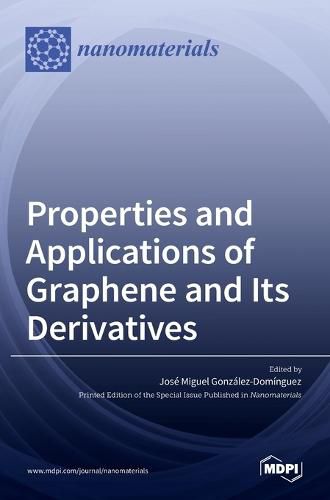Readings Newsletter
Become a Readings Member to make your shopping experience even easier.
Sign in or sign up for free!
You’re not far away from qualifying for FREE standard shipping within Australia
You’ve qualified for FREE standard shipping within Australia
The cart is loading…






This title is printed to order. This book may have been self-published. If so, we cannot guarantee the quality of the content. In the main most books will have gone through the editing process however some may not. We therefore suggest that you be aware of this before ordering this book. If in doubt check either the author or publisher’s details as we are unable to accept any returns unless they are faulty. Please contact us if you have any questions.
Graphene is a two-dimensional, one-atom-thick material made entirely of carbon atoms, arranged in a honeycomb lattice. Because of its distinctive mechanical (e.g., high strength and flexibility) and electronic (great electrical and thermal conductivities) properties, graphene is an ideal candidate in myriad applications. Thus, it has just begun to be engineered in electronics, photonics, biomedicine, and polymer-based composites, to name a few. The broad family of graphene nanomaterials (including graphene nanoplatelets, graphene oxide, graphene quantum dots, and many more) go beyond and aim higher than mere single-layer (‘pristine’) graphene, and thus, their potential has sparked the current Special Issue. In it, 18 contributions (comprising 14 research articles and 4 reviews) have portrayed probably the most interesting lines as regards future and tangible uses of graphene derivatives. Ultimately, understanding the properties of the graphene family of nanomaterials is crucial for developing advanced applications to solve important challenges in critical areas such as energy and health.
$9.00 standard shipping within Australia
FREE standard shipping within Australia for orders over $100.00
Express & International shipping calculated at checkout
This title is printed to order. This book may have been self-published. If so, we cannot guarantee the quality of the content. In the main most books will have gone through the editing process however some may not. We therefore suggest that you be aware of this before ordering this book. If in doubt check either the author or publisher’s details as we are unable to accept any returns unless they are faulty. Please contact us if you have any questions.
Graphene is a two-dimensional, one-atom-thick material made entirely of carbon atoms, arranged in a honeycomb lattice. Because of its distinctive mechanical (e.g., high strength and flexibility) and electronic (great electrical and thermal conductivities) properties, graphene is an ideal candidate in myriad applications. Thus, it has just begun to be engineered in electronics, photonics, biomedicine, and polymer-based composites, to name a few. The broad family of graphene nanomaterials (including graphene nanoplatelets, graphene oxide, graphene quantum dots, and many more) go beyond and aim higher than mere single-layer (‘pristine’) graphene, and thus, their potential has sparked the current Special Issue. In it, 18 contributions (comprising 14 research articles and 4 reviews) have portrayed probably the most interesting lines as regards future and tangible uses of graphene derivatives. Ultimately, understanding the properties of the graphene family of nanomaterials is crucial for developing advanced applications to solve important challenges in critical areas such as energy and health.